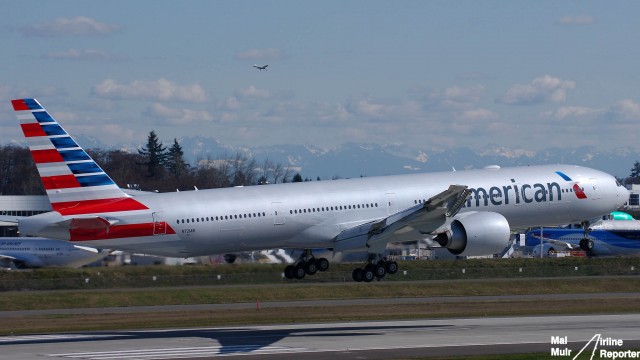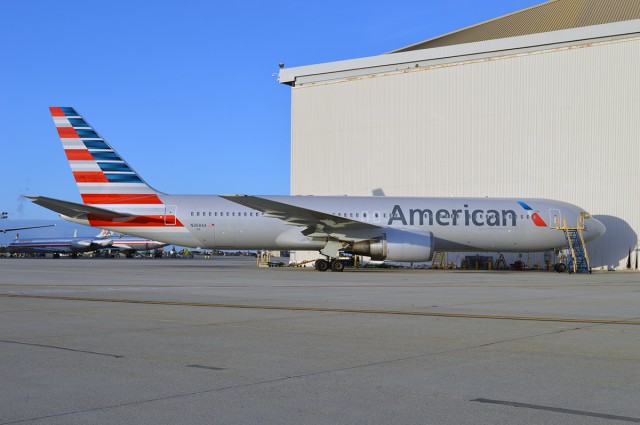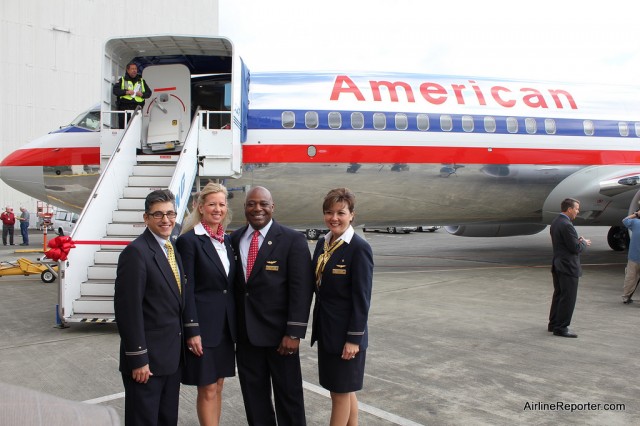
American Airlines pioneerd the frequent flier program. Could they have ever known people would just fly for miles? Photo by David Parker Brown.
This is a multi-part (or multi-leg) series on mileage runs. Future parts will be posted soon.
Everyday people are up in the sky, flying to and from their destination inside a metal tube. But why? For some it is business, for others they are off on vacation to a faraway destination. It could also be either a fun or reluctant trip to visit their family. But there are another group of people who are out there flying: the mileage runners. These are the folks who are not flying to get to a destination, they are flying to earn miles via an airline’s rewards system to get status and those benefits to come with it.
Airline rewards programs are nothing new. American Airlines was the second airline to offer a frequent flyer scheme, behind Texas International Airways. AAdvantage was born in 1981, giving an incentive back to those who flew often with the airline. It was a pretty basic program back then, compared to now.
These days the frequent flier schemes offer more rewards and in some cases can be hugely profitable for the airline. Some programs offer bigger rewards than others; the extreme likely being able to use Virgin Atlantic miles (2,000,000 to be exact) to enter a drawing to travel to space on Virgin Galactic.
Earning these miles can come from a number of ways not just by flying; credit cards and staying at certain hotel chains can help. As the balance builds so does the desire to earn more – it becomes almost an addiction
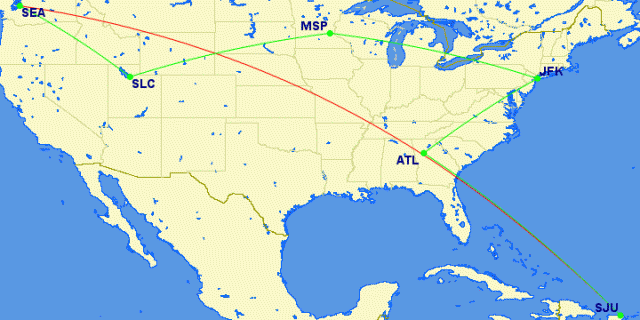
Why Fly the Red Route when you could fly the Green?
How do you earn the big points? Well, the fun way is to fly! It is quicker to rack up points than you might think. If your program awards you one point per mile and you fly a 1000 miles, then that is 1000 points right?
But what if that flight was cheaper via another city, which added 500 miles to your trip? Most passengers might avoid that option, but that’s a 50% bonus. What if you could make that one way flight from Seattle to San Juan (in Puerto Rico) go via Salt Lake, Minneapolis, New York and Atlanta, all for the same price? Does that make you crazy? No it makes you a mileage runner.
Although someone out there surely started the trend, there is now a community of people now who mileage run for a number of reasons. Sites like Flyertalk or Milepoint contain a wealth of knowledge as users share the best tips, tricks and ways of just getting through your flights.
The best thing that these sites offer for the mileage runner are the sections dedicated to finding the best mileage runs. Be it a multi-leg flight from the west coast to Japan, via Hawaii, Guam and Hong Kong or from San Francisco to New Zealand, via Dubai and Melbourne.
Be aware that each airline program is different and have rules that you need to follow. Some of these runs might set you back $500-600, but nett you, with bonuses, 20,000 to 30,000 points by the time you’re finished. If you have vouchers from delays or bumps, then this can bring that price down even more. There are even some bloggers who give great guides on actually booking these complicated mileage runs.
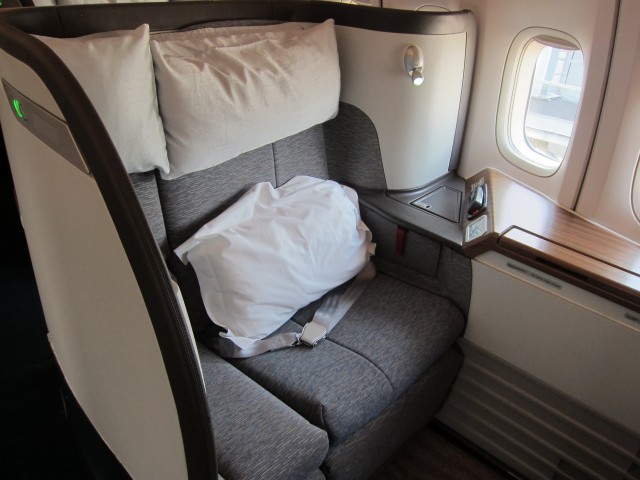
Cathay Pacific First Class “Suite” – Photo: Ben Schlappig
You are probably thinking to yourself, ’œwhy would I put myself through all of that — this can’t be worth it.’ Look at this way. You put yourself through all of this hassle of researching the bargain basement fares, spend more time taking the long way to your destination, but be sure to keep targeting one airline. It doesn’t take long for you and your traveling companion to earn 140,000 points each with an airline , which is not all that hard if you fly for a living (or churn a few credit cards, but that’s another story). Sure you could use it for a few first class trips to Vegas or a number of coach tickets somewhere, but why not drop it in one hit on something aspirational.
Most airlines allow you to redeem your 140,000 points for flights with some of its partners. There are quite a few options with that many miles. Like a nice trip to the West Coast of the USA to Africa… via Hong Kong. That may sound like torture, sure. But even the non AvGeeks among us would want to fly with the seat seen above on Cathay Pacific.
For 140,000 points you can fly round trip from San Francisco to Johannesburg with Cathay Pacific. That’s four flights, 14 hours each, with a stopover allowed in each direction. That is about $40,000 worth of first class flights — maybe that hassle does not look that bad anymore.
So, why mileage run? It is not just about earning points. It is about what you can do with those points. Next time you’re flying your way somewhere, think to yourself. Could I be earning my points a little bit better?
This series will continue with additional insights on mileage running — stay tuned.
 |
This story written by…Malcolm Muir, Lead Correspondent. Mal is an Australian Avgeek now living and working in Seattle. With a passion for aircraft photography, traveling and the fun that combining the two can bring. Insights into the aviation world with a bit of a perspective thanks to working in the travel industry.
@BigMalX | BigMal’s World | Photos |
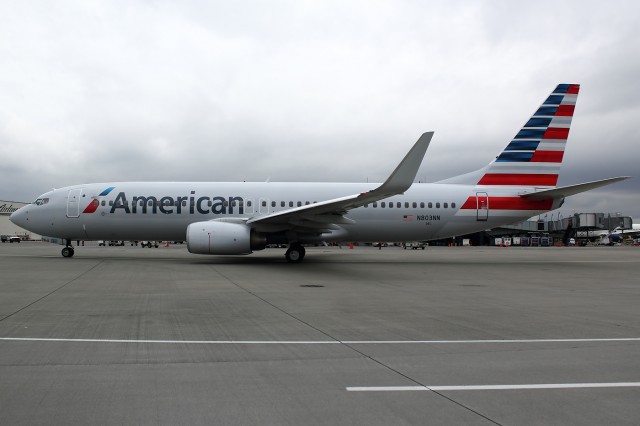
American Airlines Boeing 737 (N803NN) with new livery seen for the first time in Seattle. Image by Brandon Farris.
I recently had the chance to see up close and personal the New American Airlines scheme when it arrived to Seattle-Tacoma International Airport (SEA) for the first time, and have to say, pictures do not do it justice. Previously I was quoted on AirlineReporter.com saying that the new design was,’œFugly.” You could say I was not a huge fan.
Seeing it person really makes a huge difference. The logo stands out on the front of the plane and reaches back just before the emergency exit. Then we get to the tail, from a distance it is not the sharpest looking thing in the world but up close American Airlines seems to have hit a home run with it. Though it looks like as one person described, drawn via a crayon, it is artistic looking compared to what has become the dull Red and Blue AA that has graced the tail for far too many years.
I have seen quite a few people say that the design will not stand out among the gray sky. Obviously, SEA is known for its gray sky and during the 737’s visit, it was surely gray, but the tail stood out. I couldn’t imagine what it will look like on a sunny day.
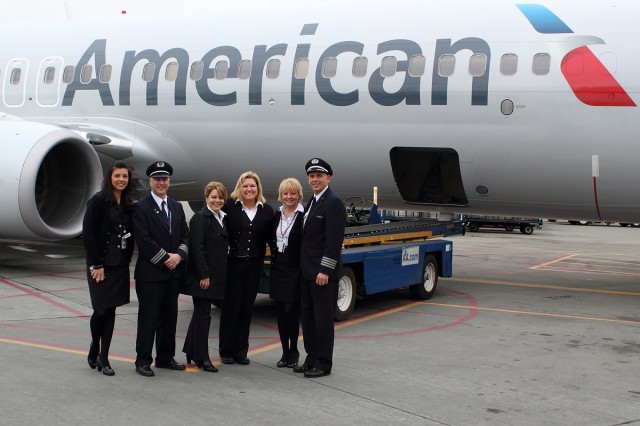
The American flight crew stopped to pose in front of the new American livery. Photo by Brandon Farris.
Everyone who was at SEA, from passengers flying through, to airport ground agents along with the TSA and FAA all seemed to make their way to the gate that it was parked at to take a sneak peak at the new scheme.
Many people working on the flight for American seemed to take a moment and bask in the new identity and even stopped for pictures. I also have to note that this was the happiest AA crew that I have ever seen and kinda wish more had their chipper personality (maybe this is truly the “new” American?).
Now with the merger coming on to the horizon, I for one, have to say that I cannot wait to see this new scheme on the A330 and think that it’ll be one of the best looking planes out there. Next thing we wanna see though is that tail on an MD-80.
If you have been able to see the new livery in person — has it changed your opinion?
MORE NEW AMERICAN LIVERY PHOTOS AT SEA:
[nggallery id=39]
 |
This story written by…Brandon Farris, Correspondent.
Brandon is an avid aviation geek based in Seattle. He got started in Photography and Reporting back in 2010. He loves to travel where ever he has to to cover the story and try to get the best darn shot possible.
@BrandonsBlog | RightStuffPhotography | Flickr |
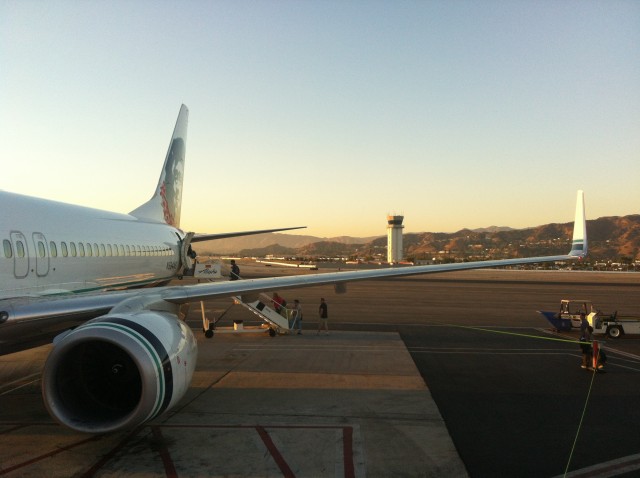
Boarding an Alaska Airlines Boeing 737 at Burbank. Image by Colin Cook.
It used to be that most major airlines shared commonalities in the way they boarded passengers. However it seems that each airline has so their own boarding processes that it’s hard to keep up. Sure, the way an airline boards likely won’t sway a decision on which airline to fly, I wanted to put together a list of how some of the major airlines operate their boarding process.
As one would expect, the majority of airlines give priority boarding to their elite level fliers. Having personally achieved even a low level MVP with Alaska Airlines I can say that I would never want to go back to being just ’œone of the herd.’ While I haven’t gone on a ’œmileage run’, there are many well documented stories of folks taking a quick trip just for the sake of achieving elite-level status.
With precious overhead space and many airlines now charging for checked luggage it’s become a race to get on board as early as possible. While some low cost carriers are now charging for carry-on bags, the major US airlines typically allow one carry-on bag (i.e. a roller bag or other bag for the overhead bin) and one personal item (laptop bag, purse, backpack, etc). Since many travelers are now bringing a large carry-on bag, boarding times have soared. An article in the New York Times suggested that boarding a plane with 140 people in the 1970’s took about 15 minutes which has more than doubled to 30-40 minutes.
Without further adieu, here is how the various airlines handle their boarding procedures (a small note: these are all the boarding requirements as found by AirlineReporter.com at the time of publishing. These change frequently, so please add any changes/ideas to the comments and listen to all gate announcements for proper boarding proceedures):
How does Air Tran board? ’“ This airline’s boarding procedures will undoubtedly change as the integration into Southwest takes place over time. Southwest operates a 737 only fleet and is in the process of subleasing Air Tran’s Boeing 717 planes to Delta. Presently, Air Tran pre-boards unaccompanied minors, passengers traveling with an infant, and passengers needing special assistance prior to general boarding. Like many other airlines, Air Tran utilizes a zone boarding process.
How does Alaska Airlines board? ’“ Being based in the Pacific Northwest, I fly Alaska more than any other airline. Their boarding process is pretty straightforward. They don’t mess around with zones or boarding groups and have a seemingly more streamlined approach. They begin with preboarding ’“ those customers who are traveling with children or need some additional time to get down the jet way. After preboarding, they invite First Class, Alaska Airlines MVP and 75k elite level fliers. Next are passengers seated in row six of the main cabin (bulkhead row at the front of economy) and Alaska MVPs and partner elites. After that, they board from the rear of the plane starting with passengers seated in row 15 and higher. Finally they open to general boarding at that point. It’s a pretty well organized system and tends to work well.
STORY: Flying First Class on Alaska Airlines
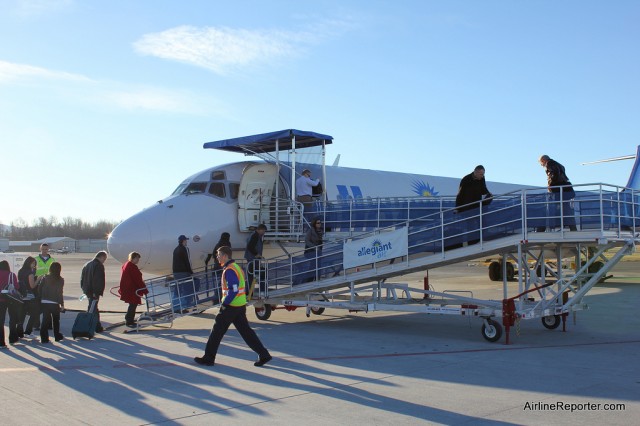
Boarding an Allegiant MD-80 in Bellingham. Image from David Parker Brown / AirlineReporter.com.
How does Allegiant board? ’“ Allegiant offers many different add-ons to their standard fare and does a nice job of providing ala carte service where you can add additional services to their basic fare. Among their options are Priority Boarding for $9.99 (allows you to board first), Premium Seat Selection $9.99 (an assigned seat near the front or exit row), Standard Seat Assignment $6.99 (assigned seat towards the back of the plane). You can certainly opt to fly without paying any of those additional fees, but be prepared to sit in a middle seat. Their boarding process allows people that paid for priority boarding to board first, followed by those who need a little extra time. Then passengers who paid for the standard seat assignment are allowed to board followed by those who do not have seat assignments but have young children. Lastly it goes to open seating and people get to fend for them self to find an open seat.
STORY: Flight review flying Allegiant Airlines
How does American Airlines board? ’“ American is one of the airlines that actually disclose their boarding process on their website. Many airlines do not give a specific process but simply expect you to pay attention when you get to the airport. American employs a process similar to most of the other legacy carriers in that they give priority to elites and then general boarding. Their process consists of preboarding First Class, Uniformed Military, AAdvantage Executive Platinum, and oneworld Emerald. On aircraft with three class service, Business Class is boarded next. The next group consists of AAdvantage Platinum and oneworld Sapphire, followed by Priority AAccess and oneworld Ruby. From there, American is in the home stretch boarding groups 1-4. Of course this could all be changing with the airline merging with US Airways.
STORY: Taking American’s 737 Sky Interior Delivery Flight
How does Delta Air Lines board? ’“ The world’s largest airline by passengers carried and fleet size has developed a good reputation among both business and leisure travelers. They utilize a zone boarding process similar to many of the other large airlines. They first offer preboarding to their Sky Miles Medallion elite level fliers (Diamond, Platinum, and Gold) and passengers traveling in the first class cabin. On international flights they then invite passengers traveling in BusinessElite, Sky Miles Medallion Silver frequent fliers, and partner elites to board. Delta then begins general boarding via a zone process beginning from the rear of the aircraft. Depending on the size of the plane and whether it is an international or domestic flight, Delta can have as many as nine different boarding groups.
How does Frontier Airlines board? ’“ Denver’s hometown airline has been undergoing some big changes in recent years. Frontier uses a zone boarding style similar to many other carriers, beginning with preboarding for passengers with special needs, which include passengers who need assistance and unaccompanied minors. Similarly to Jet Blue’s Silent Boarding group, they do not announce a special boarding for this group. The one nice thing is that you don’t have to make a reservation in advance for the extra time, whereas you do on Jet Blue. Frontier then invites their Summit Members to board which is the top tier of their EarlyReturns frequent flier program. They then begin priority boarding and Zone 1 which includes Ascent members (second tier of EarlyReturns), as well as people traveling on a Classic Plus fare or seated in Stretch seating. Next, they invite families with small children and passengers requiring additional time or assistance to board. They also have a separate boarding group here for people who are not utilizing overhead bins (it pays to pack lightly). After that, they begin boarding with Zone 2, which are passengers in Select seating. Finally, they board Zone 3 which is pretty much anyone else. So while Frontier technically only has three zones, they really have seven different boarding groups.
STORY: Review flying Frontier Airlines to Denver and back
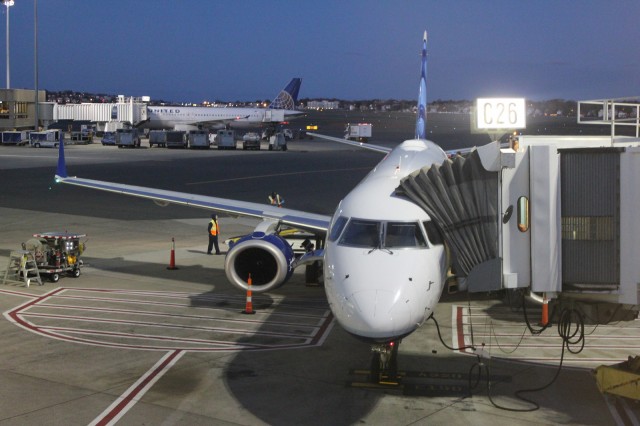
A JetBlue E-190 in Boston. Image from David Parker Brown / AirlineReporter.com.
How does JetBlue board?’“ As is typically true with most things JetBlue, they try to keep their boarding process simple. They begin with pre-boarding which they call Silent Boarding. This is a service that must be requested in advance and is designed for people who have requested or appear to need additional time boarding. The interesting bit is that they do not make a gate announcement (hence the Silent Boarding name), so it is up to you to request this service and show up at the right time. After Silent Boarding they begin priority boarding for Mosaic and Even More Space customers. Mosaic is their elite level program which has many of the same benefits as competitors (priority security lane, preferred seating, 2 free checked bags, bonus points, and dedicated customer service line). Even More Space is an option that you can select when booking and just like it name suggests you get more space.
JetBlue then invites families with children under the age of 2 and other individuals who need additional time to board. It’s interesting that they have their Silent Boarding and then a separate pre-board for people who may need additional time. Finally, they board from the rear of the aircraft forward in five row increments. This begins with individuals in rows 20-25, then 15-25, 10-25, and lastly 5-25.
STORY: Flying JetBlue from the Bahamas to Boston in an E-190
How does Southwest Airlines board? ’“ Southwest is unique since they do not actually assign seats. So it’s still important to get a good boarding group to ensure a good seat and overhead storage. Their overall process contains a boarding group (A, B, or C) and a number (1-60) and they have passengers queue up in the boarding area in a line according to the boarding group and number. Some have called this process a “cattle call,” but really it seems like less people end up standing around waiting to be called than with other methods. Alternatively, you can buy a Business Select or EarlyBird Check-In to be among the first to board. For frequent fliers, it is a pretty simple boarding process, but it seems that people who do not fly often, easily get confused on how to board a Southwest plane.
STORY: Guide to getting a good seat on Southwest Airlines
How does Spirit Airlines board? ’“ Spirit is the ultimate King of low cost travel and their boarding process and baggage policies reflect that. Like Allegiant, their base fares are always amongst the lowest but Spirit is betting you will purchase additional services. They not only have fees for seat selection but also other amenities such as checked baggage and soft drinks on board. Spirit employs a zone boarding process similar to many airlines with some differences. They allow unaccompanied minors and others requiring assistance first, followed by folks sitting in their Big Front Seats (first row or two depending on aircraft that are in a 2-2 layout and have better seat pitch), and then the remaining zones 2, 3, & 4. The one difference is that they board from the front to the back.
How does United Airlines board? ’“ No sooner than I finished writing the original section on United, the airline made yet another change in their boarding process. This marks the fifth time in less than two years that the airline has changed their procedure. This is not surprising as mergers always result in some chaos, but it would seem smart for the airline to stick to one process for a while — hopefully this one will stick.
Under the new process, they begin with pre-boarding of customers with disabilities, Global Services, and uniformed military personnel. Following that, Group 1 is invited to board which included Global Services (for customers that did not pre-board), Premier 1K, Premier Platinum, and their premium cabins. Group 2 is essentially for all of the United and partner elite fliers including Premier Gold and Silver, Star Alliance Gold and Silver, MileagePlus Presidential Plus and Club cardholders, MileagePlus Explorer and Awards cardholders.
It’s interesting that United does not give greater priority to their Gold and Silver level fliers ’“ someone who holds their credit card is given the same boarding priority. United has really been pushing their Explorer credit card so it’s no surprise they used priority boarding as a selling point. United then opens up for groups 3-5 for general boarding from the rear of the aircraft. Unlike other airlines, they no longer give priority boarding to families traveling with infants or young children. Those families must board when their group number is called.
How does US Airways board? ’“ Much like other legacy carriers, US Airways uses a zone boarding process. They begin with preboarding of First Class / Envoy, Preferred members of their Dividend Miles program, and Star Alliance Gold members. After preboarding, zone 1 consists of the bulkhead row and exit row seats without under the seat storage. It’s interesting that they allow exit row seats without under the seat storage to board early. I realize that these folks have responsibilities since they are in the exit row, but does it really take them longer to board?
Zone 2 is made up of US Airways Premier World MasterCard holders, US Airways Visa Signature card holders, ChoiceSeats, and Exit row seats with under-the-seat storage. Much like United, they have given their credit card holders a priority boarding group. At least the elite members of their Dividend Miles program get a higher priority (United has the same boarding priority for Gold and Silver elites as they do for their credit card holders). Finally they board from the rear forward beginning with zones 3-5. It’s a fairly straightforward process which is nice.
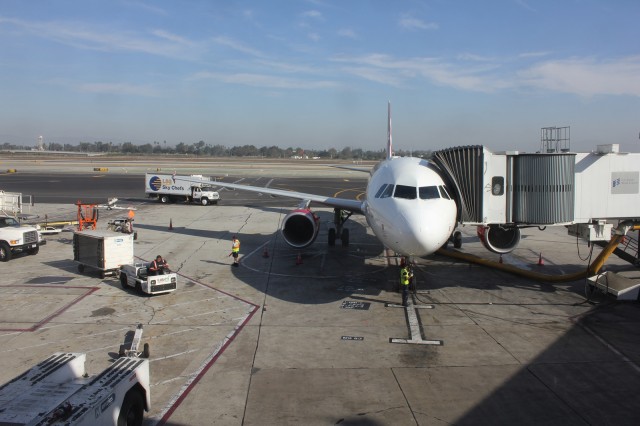
Virgin American Airbus A320 at LAX. Image by David Parker Brown / AirlineReporter.com.
How does Virgin America board? ’“ Virgin American starts with allowing their First Class passengers to board before allowing folks with children and disabled people who need a little more time. Then they move on to Main Cabin Select, which are in the first row of economy and the exit rows so they have more legroom. The Main Cabin Select fare also comes with complimentary food and drinks and one free checked bag. After those two groups, they board the Main Cabin Express group. Ultimately, this is just an add-on that you can purchase to be among the first to board.
Being that I really like to be sit near the front and be able to get off the plane as soon as possible, this fare is quite appealing. Finally, they move on to a group based boarding process, starting with A and moving through the alphabet. I recall on one flight it went groups A-D, but on another it went A-F.
STORY: Flying in Virgin America’s First Class
Hopefully this article can provide some insight the next time you are traveling and are curious about how different airlines board. In the comments, be sure to talk about your boarding experiences and which processes do you like (or hate the most)?
Related links in airline boarding:
 |
This story written by…Colin Cook, Correspondent.Colin is an avid AvGeek who works in finance and is based in the Seattle area. He has an immense passion for aviation and loves to travel as much as possible.
@CRoscoe2121 |
